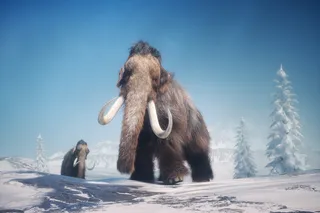This story was originally published on July 19, 2022.
When paleoanthropologist Laura Shackelford first explored a tiny remote cave in northern Laos, she didn't expect to find anything compelling. She was used to working in sediment at the bottom of caves and didn't see anything of interest. But then she shined her flashlight towards the cave's walls and immediately noticed a mosaic of prehistoric teeth that had formed on its surface.
The cave consisted of breccia: rocks, minerals and fossilized teeth that landslides or water events form when crushing sediment into a cave's walls. The force is so strong that rocks and teeth are usually the only things solid enough to survive.
"It looked like fruit in a fruitcake, the tiny pieces stuck inside," says Shackelford.
The team had uncovered a goldmine of prehistoric teeth, and one of them looked different from the rest. It didn't come from a giant ...















